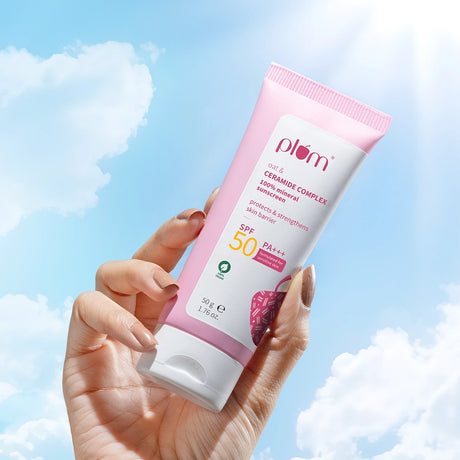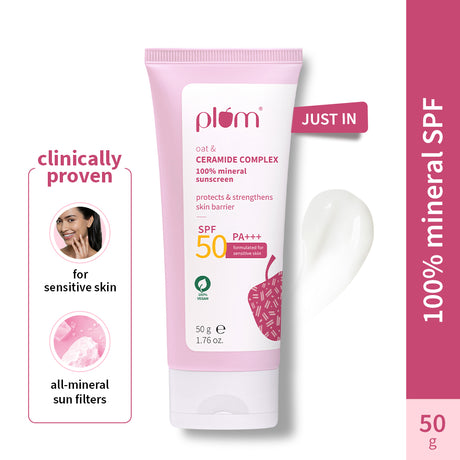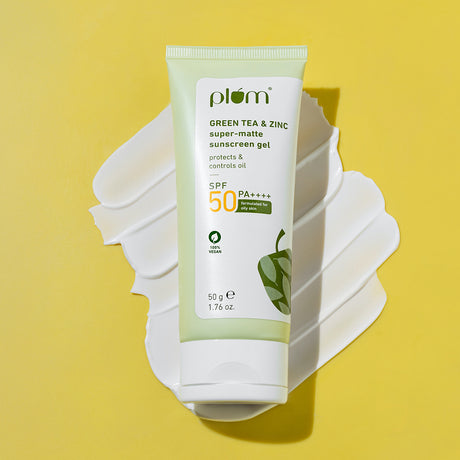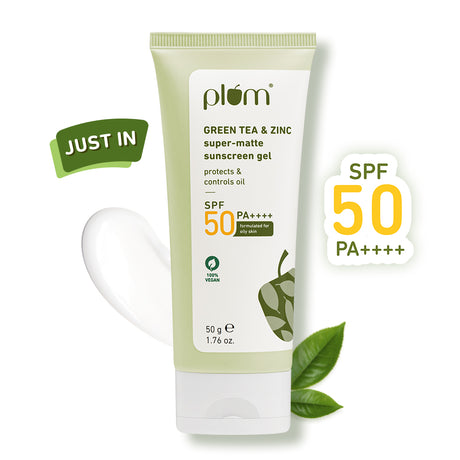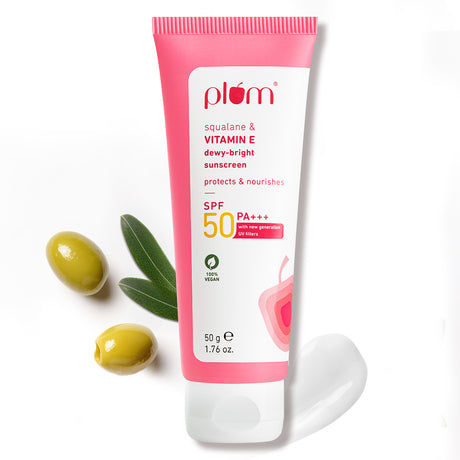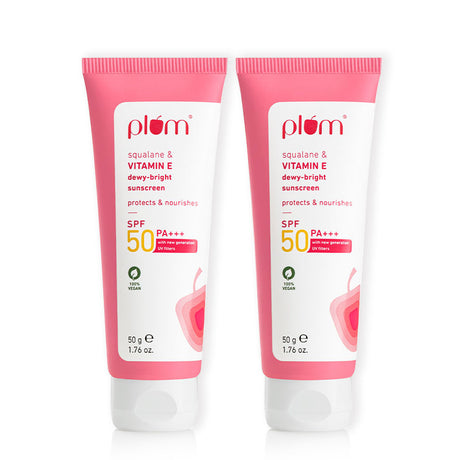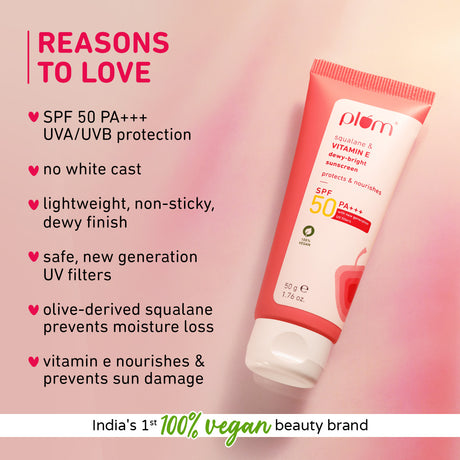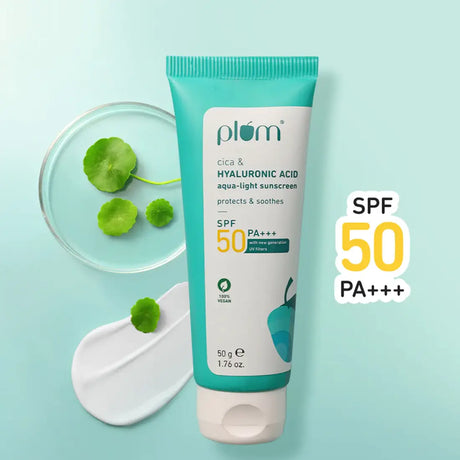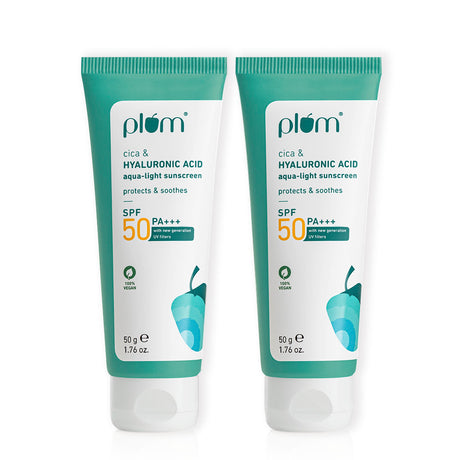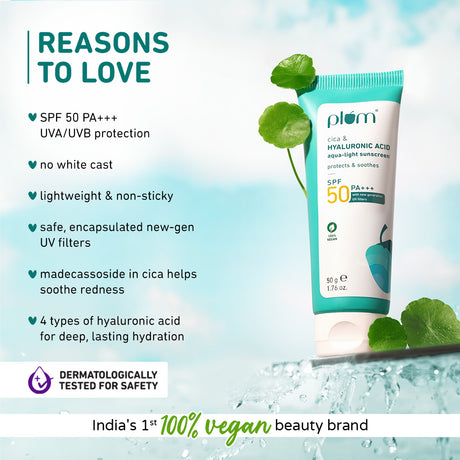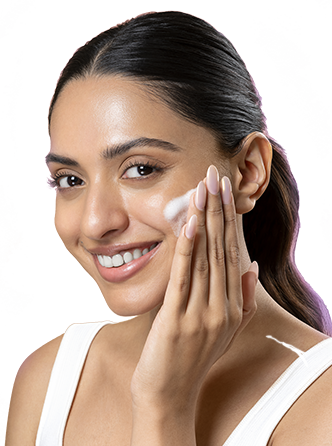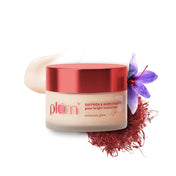
IN THIS ARTICLE
Regular use of sunscreens; is it still a debate? Not for anyone who loves their skin clear and glowing! For the rest, let's make this crystal clear: Sunscreen is the non-negotiable hero of your daily skincare routine – no exceptions.
However, you must understand how to apply sunscreen on your face daily correctly. You could be making some mistakes while applying sunscreens that can impact its effectiveness.
How to apply spf on face effectively & common sunscreen mistakes to avoid
Here are 10 common mistakes people make when learning how to use sunscreen on face that you need to be wary of:
1. Not applying the adequate amount
If you believe a few dots of the sun cream on your skin will serve the purpose, that’s not how it works. To ensure that your skin gets complete protection against sun damage and tan, It's essential to apply a generous amount of sunscreen on exposed skin, including the neck area.
Wondering how to apply sunscreen on face in the right manner?
Here is the thumb rule:
- You must apply sunscreens at least 15 - 20 minutes before stepping out in the sun.
- Dispense at least two finger lengths of the product, apply evenly on the face and neck and gently massage it in an upward motion until it is completely absorbed.
- Use it as the final step of your skincare regimen after moisturizing.
- Reapply every 2-3 hours, or more if you go swimming or sweat.
2. Applying just before stepping out
Sunscreen needs enough time to be absorbed in your skin completely. This is why applying sunscreen right before stepping out will not be effective enough to provide adequate protection to your skin against harmful UVA and UVB rays.
How to use sunscreen on the face properly? Experts suggest applying sunscreen at least 15-30 minutes before you are exposed to the sun. Moreover, you must reapply it every 3-4 hours or more if you tend to sweat excessively or are going swimming.
3. Not using the right product
Just like you consider your skin type and concerns while using other skincare products, it is important to choose sunscreens based on your skin's needs. Learn more about how to choose sunscreen based on your skin type in one of our blogs. Sunscreens come in various consistencies, forms, and filters, which can leave you wondering: Can we apply sunscreen directly on the face? The answer is yes! However, for the best results, ensure your sunscreen has an SPF of 50 (or at least SPF 35) with effective UV filters and is enriched with skin-loving ingredients like hyaluronic acid, cica, or squalane. When picking the best sunscreen for your face, always check its ingredients and the benefits of sunscreen it provides.
4. Applying only during summers
The harmful sun rays are always lurking around, even during cloudy days and winters. Unbeknownst to many, UV rays can penetrate through glass windows and even snow, making your skin more vulnerable to sunburn. That is why applying sunscreen only during summer is not enough. How to apply sunscreen effectively? You must use sunscreen throughout the year, regardless of the season, to protect your skin from UV damage.
5. Not reapplying
How to use sunscreen effectively is a common question. However, not many consider the importance of reapplication. Sunscreen’s effectiveness diminishes over time. Therefore, applying sunscreen once a day is not enough, especially if you are outdoors or are exposed to sun rays through windows and glasses. For complete protection against sun damage, reapply sunscreen every three hours.
6. Not applying on the body
The skin on the other parts of the body is equally vulnerable to sun damage. Therefore, it is crucial to apply a generous amount of sunscreen to your ears, neck, and back of the neck too. Similarly, if you are outdoors, you must apply it all over your exposed areas, including your arms, legs, and back. You can opt for a body sunscreen to protect your body against the harmful UV rays. Though you can even use face sunscreen, ensure that you apply an adequate quantity to avoid getting sunburned and tan.
7. Only considering the SPF
SPF or the sun protection factor might be the most crucial factor for sunscreens, but it's not the sole indicator of effectiveness. SPF primarily measures protection against UVB rays, which cause sunburn. However, you need protection against UV rays as well.
Ensure your sunscreen is labeled as "broad spectrum" for protection against both UVA and UVB rays. Moreover, ensure that your sunscreen contains PA. PA stands for the protection grade of UVA. Therefore, the higher the PA, the better the protection against UVA rays. So while choosing sunscreens, don't just stop at SPF, consider other factors too.
In addition to choosing the right sunscreen, it’s crucial to know how to apply sunscreen properly. Apply it generously and evenly to all exposed areas of your face, and reapply every two hours, or more frequently if you’re sweating or swimming. Consider these factors to ensure comprehensive sun protection.
8. Not considering the filters
Not understanding the contents of your sunscreen could reduce the sun protection you are looking for. Let us help you.
There are three types of sunscreens: Chemical, physical (mineral), and hybrid. Chemical sunscreens absorb UV rays, while physical sunscreens create a barrier by reflecting them. Similarly, hybrid sunscreens have the benefit of both.
Apart from these three, you can also explore additional filters like blue light protection (one that deflects blue light emitting from phone and laptop screens) and new-gen filters to choose from.
New Gen filters are known to be the safest sun filters. They remain stable when exposed to sunlight and are less likely to cause skin irritation.
To ensure maximum protection, it's important to understand how to apply sunscreen cream on face correctly. Read the labels carefully and choose the one that suits your skin type and preferences.
9. Relying only on sunscreens for sun protection
The UV rays can be more harmful than we think. While sunscreen considerably helps protect the skin against it, it is not enough.
You need to ensure that you do not expose your skin to the harsh sun rays for a longer time.
Avoid prolonged sun exposure and stepping out in direct sunlight during the peak hours between 10am to 4pm.
Seek shade when outdoors, and wear protective clothing, like full-sleeved clothes, sunglasses, hats, and gloves.
Additionally, knowing how to apply sunscreen correctly is essential to ensure you’re getting the maximum protection from the sunscreen you use.
10. Using an expired product
Like all other products, sunscreens have a shelf life too. You can use sunscreens either for three years or up to their expiration date.
Using a sunscreen that is past its expiration date can reduce its effectiveness and potency, leaving your skin vulnerable to sun damage. How to apply sunscreen properly on your face daily?
Always check the expiration date before applying. In case it's not present on the label, write the purchase date on the tube.
Best sunscreens worth trying
Here are some of the best sunscreens without a white cast. They are non-greasy, lightweight, and enriched with skin-loving ingredients like cica, squalane, niacinamide, rice water, vitamin E, hyaluronic acid, and more.
Squalane & Vitamin E SPF 50 PA+++ Dewy Bright Sunscreen2% Niacinamide & Rice Water SPF 50 PA+++ Hybrid SunscreenCica & Hyaluronic Acid SPF 50 PA+++ Sunscreen
To sum up, knowing how to apply sunscreen on face daily is not enough. You also need to ensure you're using it correctly. It's important to know when to apply sunscreen and how much sunscreen to apply on face. Avoid common sunscreen mistakes to get the most out of your sun protection. Your skin will thank you!
Also, read:
How To Use Niacinamide Sunscreen | How To Use Hyaluronic Acid Sunscreen | How To Apply Gel Sunscreen | How To Use Sunscreen For Dry Skin | How To Choose Sunscreen | Why My Face Sweat After Applying Sunscreen | Benefits Of Sunscreen | Does Sunscreen Prevent Tanning | Is Sunscreen Really Necessary | Sunscreen Vs. Sunblock – Which One Should You Choose?
FAQs
Q1. How much sunscreen to apply on face?
Most people tend to use less sunscreen than needed, which reduces its effectiveness. For proper coverage on your face, the recommended amount is around 1-2 fingertip units.
Instead of applying two-finger lengths of sunscreen in one go, try using smaller amounts, around 1-2 fingertip units at a time.
Dot it across your face, spread it thinly, and let it absorb before repeating the process 2-3 times, if necessary.
Applying sunscreen in smaller increments helps your skin absorb it better. Remember to extend the application to your neck and ears for complete protection.
Q2. How to apply sunscreen with makeup?
- Start with a broad-spectrum sunscreen as the base of your skincare routine.
- Allow the sunscreen to set for at least a minute before applying makeup.
- Use liquid or cream sunscreen before foundation for smooth layering.
- To reapply sunscreen over makeup, lightly pat it using a sponge until absorbed.
- Ensure full coverage on all exposed areas, including your face, neck, and ears.
- For added protection, consider makeup products infused with SPF.
Q3. Can we apply sunscreen directly on face?
One of the most frequently asked questions is, “Can I apply sunscreen directly on face?” The answer is yes—you can apply sunscreen directly to your face.
Q4. When to apply sun screen?
Apply sunscreen as the final step in your skincare routine, after moisturizing. It's important to apply sunscreen at least 15-20 minutes before stepping out into the sun to allow it to absorb into your skin and provide adequate protection. For optimal sun protection, remember to reapply every 2-3 hours, especially if you're sweating or swimming.
Q5. When to apply sunscreen before or after moisturizer?
The general rule is to apply sunscreen after your moisturizer. Begin by nourishing your skin with your usual moisturizer and allow it to fully absorb. Once the moisturizer has been absorbed into the skin, apply a broad-spectrum sunscreen with an SPF of 30 or higher. This ensures that the sunscreen forms an effective protective layer on top of your skin, shielding you from harmful UV rays.
Q6. How to apply sunscreen on face?
To apply sunscreen on your face, dispense at least two finger lengths of product and evenly apply it to all exposed areas, including the neck. Massage it gently in an upward motion until fully absorbed, and reapply every 2-3 hours for continuous protection.
Q7. What are new-gen UV filters in sunscreen? Are they safe?
The latest new-generation UV filters (Uvinal & Tinosorb) are the safest known sun filters. They remain stable when exposed to sunlight and are less likely to cause skin irritation.



